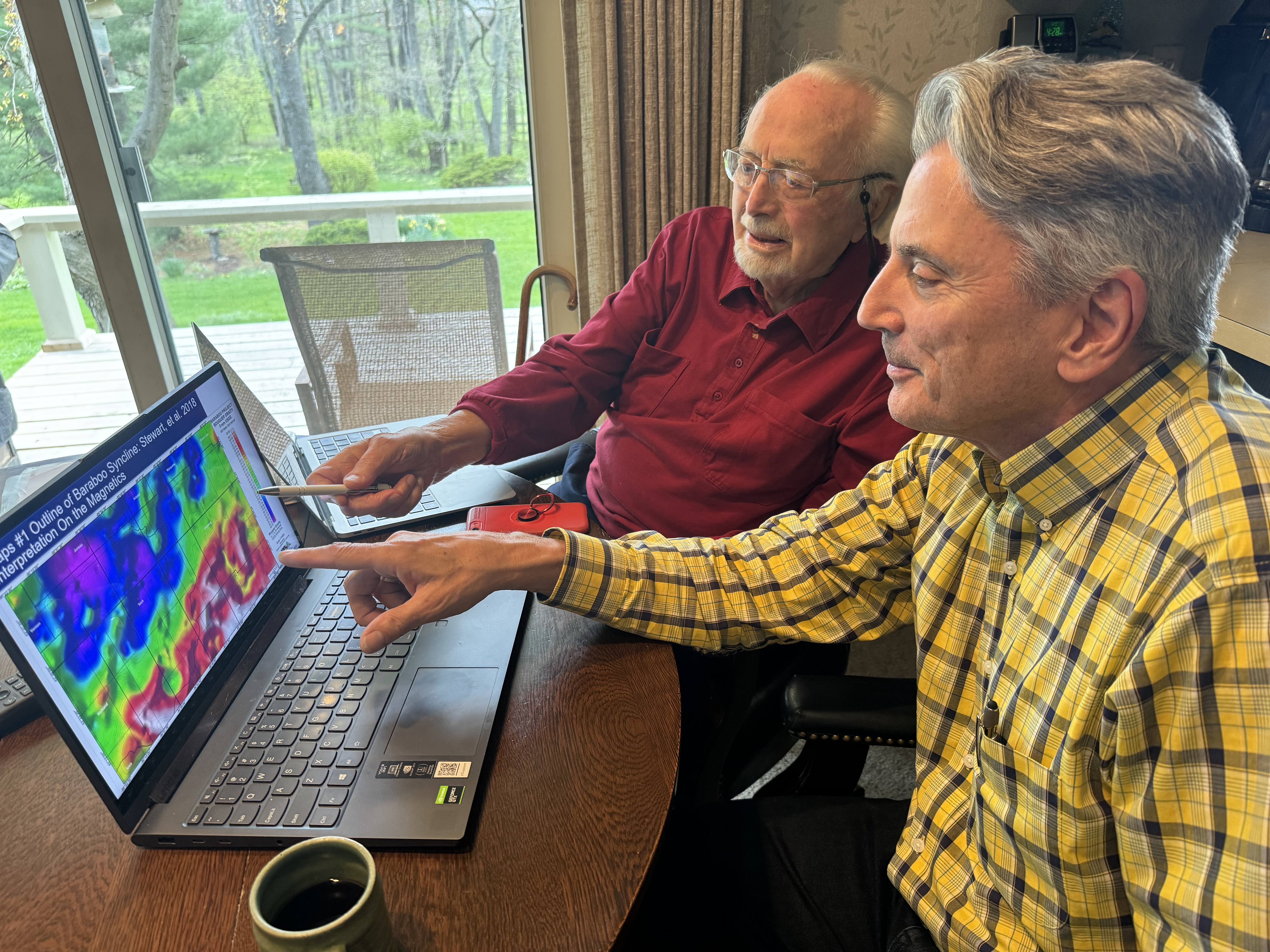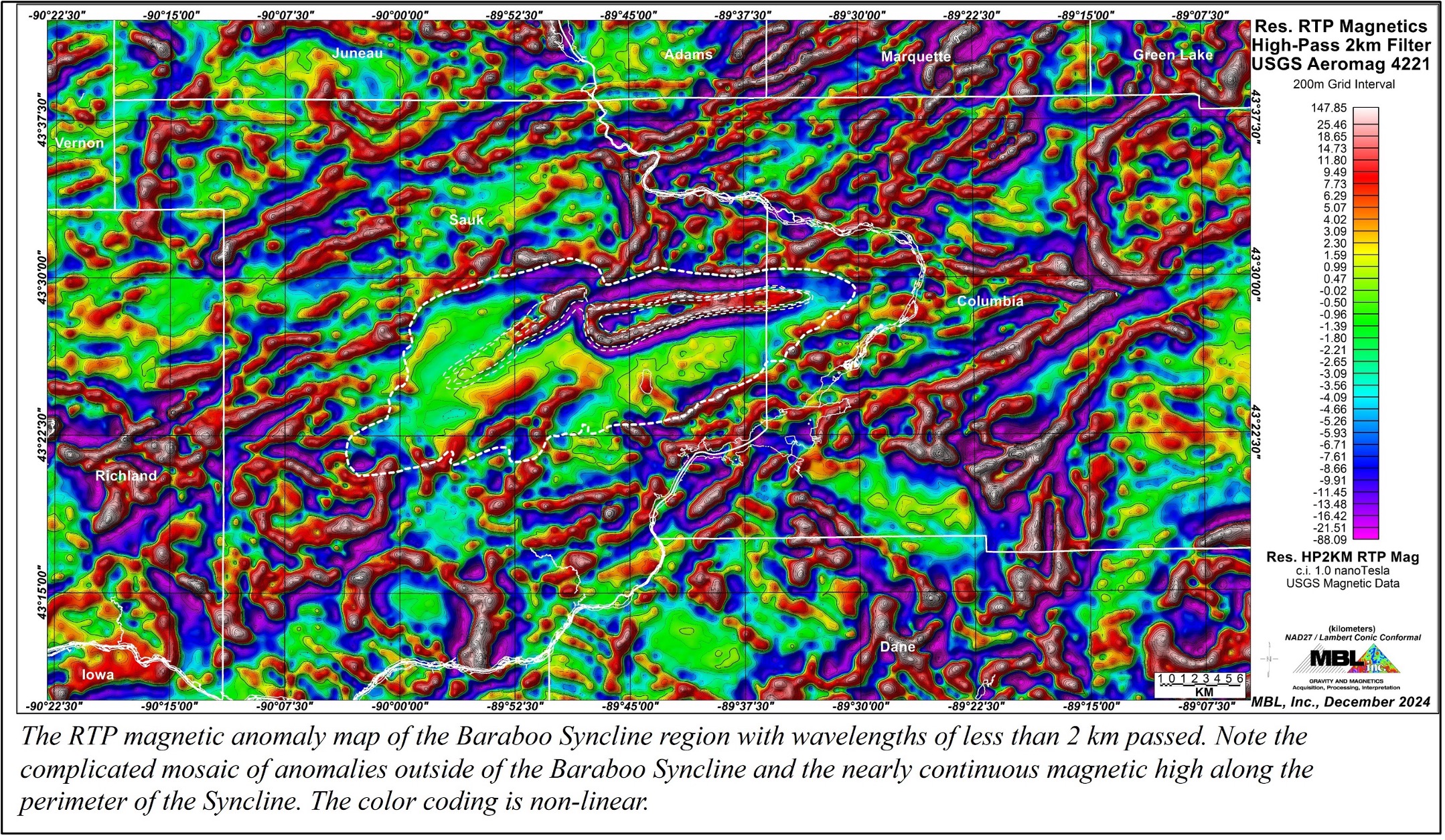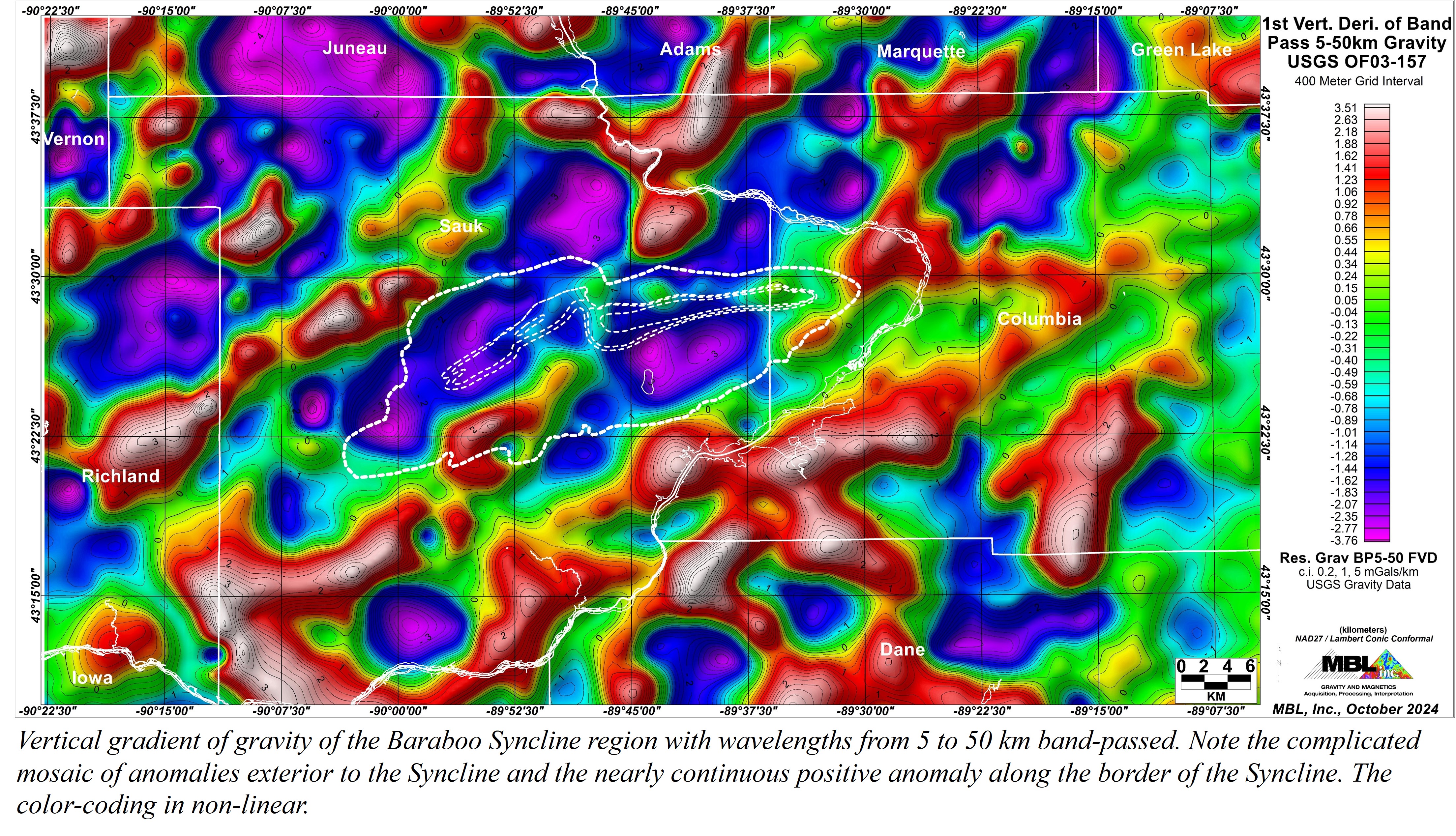70+ years of research: Historic study gets a modern refresh
01-07-2025

It is a celebration of progress and a testament to geology’s ability to reveal the Earth’s hidden stories, one layer at a time.
Two researchers are preparing to review a 70+ year-old thesis using modern technology to improve knowledge of a well-known American geological site.
Bill Hinze and Mark Longacre have been preparing to revisit Bill’s thesis that was based on data collected in 1951 and 1952. While Hinze attended the University of Wisconsin-Madison, computers were still futuristic technology. Now modern technology helps process data, enhance the interpretation, and present the results. With today’s technology, Hinze, emeritus faculty for Purdue Earth, Atmospheric, and Planetary Sciences (EAPS), and Longacre, who earned his MS with EAPS, are revisiting Hinze’s Ph.D. thesis.
Hinze had visited the Baraboo Range in South-Central Wisconsin from a young age. The Baraboo Range is believed to be one of North America's most ancient rock outcrops and “is the most studied geological feature of the North American midcontinent and perhaps of the entire continent,” says Longacre. This widely studied feature sparked Hinze’s interest in geology and led him to select the Baraboo Range as his thesis topic. His first academic trip was in 1948 when he wrote his first report on the area's geology.
Hinze’s thesis experienced a short publishing delay due to his service in the Korean War and his full-time work in the geophysical industry. Longacre explains that “Hinze was drafted into the US Army during the Korean War before he was able to complete the analysis and interpretation of the data that had been collected. And then, after being discharged from the Army he continued the preparation of his dissertation during employment in the geophysical exploration industry.”
After graduating from Purdue University in 1981, Longacre was employed as a gravity/magnetic expert in industry. Longacre maintained his dedication to geophysics when he started his consulting company in 1991. Throughout the years, Hinze and Longacre have stayed in contact, frequently discussing the application of Earth's gravity and magnetic fields to studying the subsurface and how Longacre’s company has applied this science globally. Every 2 years, Longacre returns to EAPS and teaches the Gravity and Magnetics for Earth Scientists course to graduate and upper lever undergraduate students.
The opportunity to work collaboratively came after Longacre prepared a few geophysical maps for Hinze on the Baraboo Syncline. “We realized that we could revisit Bill’s 70-year-old interpretation of the gravity and magnetics of the Syncline with the available new geophysical and geologic data. And we knew that geophysics had not been used to study the subsurface of the Baraboo Range since computers and new geologic data became available. It occurred to us that these advances could lead to greatly improved knowledge of the Baraboo Range that is a geologic feature of great interest to geologists. We also realized that it was an opportunity to show the impact of new technology on the interpretation of the available data. Thus, our joint project was initiated,” says Longacre.

Hinze and Longacre explain, “We are measuring small variations in the Earth’s gravity pull in the Baraboo, Wisconsin area that are due to variations in the mass/types of the underlying rocks associated with a downfolded geological structure, a syncline. We use these observations to determine the nature of the Baraboo Range above the ground and the Baraboo syncline in the subsurface.”
Within the last 70 years, multiple advancements have been applied to study the subsurface geology of the area. Hinze and Longacre say, “Some of these advancements are in the quality of the data (i.e., gravity and high-resolution aeromagnetic data). Others are in the density and coverage of observations (i.e., much more gravity data) and updated geological information based on 70 years of geological and geophysical studies in the area.”
Their study utilizes advanced technological developments, including computers and specialized software, for observation, processing, interpretation, and presentation. Key advancements include GPS for precise elevation and location data, software for wavelength filtering, data modeling and inversion, and creating shaded, colored contour maps and profiles.

It wasn’t until recently that Hinze and Longacre were able to “make a denser array of observations with greater accuracy, improve the elimination of extraneous effects, advance the interpretation of the resulting gravity and magnetic data with greater precision, and enhance the presentation of the data and the results of the interpretation,” all with advanced modern-day computers.
The new study from Hinze and Longacre aims to evaluate gravity anomalies for subsurface insights in the Baraboo Range region. It integrates gravity, magnetic mapping, and new geological data to refine the region's geologic interpretation while assessing the impact of modern analysis techniques and data on updated geological understandings.
This study is leading to significant new information on the Syncline and surrounding region. Hinze and Longacre explain, “Our study shows that the Baraboo Syncline is part of a larger downfold and that there are additional similar structures in the region that were unknown because they are not exposed on the Earth’s surface. Even with all the new data and the extensive geologic studies that have been done in the area, there are still more questions than answers. With this project, we hope to advance and update the interpretation of the Baraboo area.”
Hinze and Longacre plan to complete their findings before the end of the year. “Currently, we are in the process of interpreting the data and the geologic information we have assembled”, says Hinze and Longacre. “Ideally, we would like to prepare two reports. One report on the geologic results of our study and another on the impact of the new technology for observing, processing and interpreting gravity data in the study of geologic basement such as occur in the Baraboo Range. The Wisconsin Geologic and Natural History Survey has indicated an interest in publishing the results of our study.”
The improved interpretations suggest that revisiting the studies of the basement rocks of Wisconsin and adjacent regions is in order using the available improved analysis, interpretation, and presentation methods and modern data gravity and magnetic data sets. We hope that the new studies by Mark and Bill will provide a template for others to use in carrying out these studies.
About the Department of Earth, Atmospheric, and Planetary Sciences at Purdue University
The Department of Earth, Atmospheric, and Planetary Sciences (EAPS) combines four of Purdue’s most interdisciplinary programs: Geology & Geophysics, Environmental Sciences, Atmospheric Sciences, and Planetary Sciences. EAPS conducts world-class research, educates undergraduate and graduate students, and provides our college, university, state and country with the information necessary to understand the world and universe around us. Our research is globally recognized, our students are highly valued by graduate schools, employers, and our alumni continue to make significant contributions in academia, industry, and federal and state government.
Written by: David Siple, Communications Specialist for Purdue University Department of Earth, Atmospheric, and Planetary Science
Contributors:
Bill Hinze, emeritus faculty for Purdue Earth, Atmospheric, and Planetary Sciences (EAPS)
Mark Longacre, Alumnus of Purdue Earth, Atmospheric, and Planetary Sciences (EAPS)
Photo and images provided by Hinze and Longacre